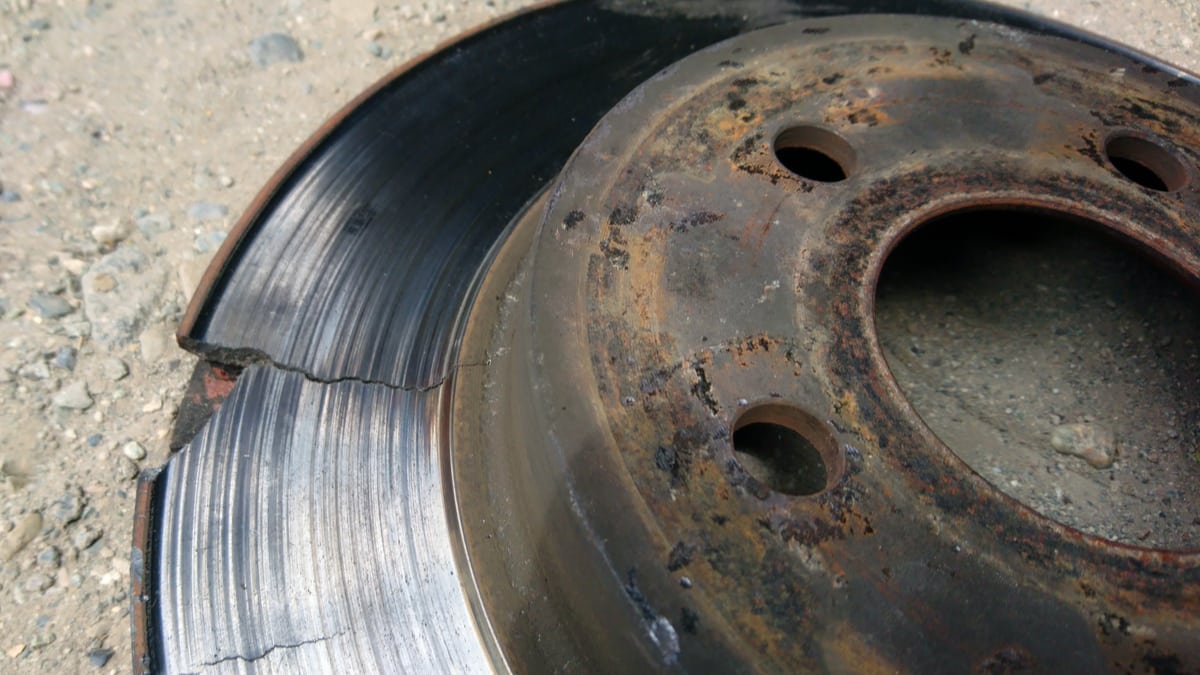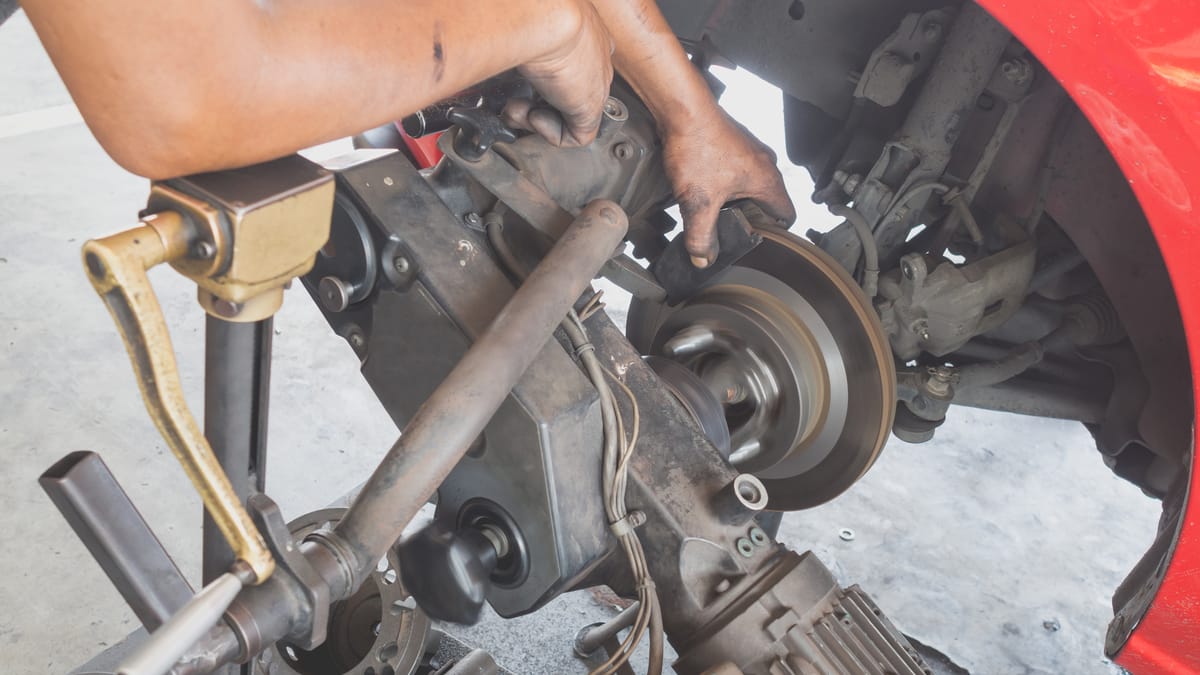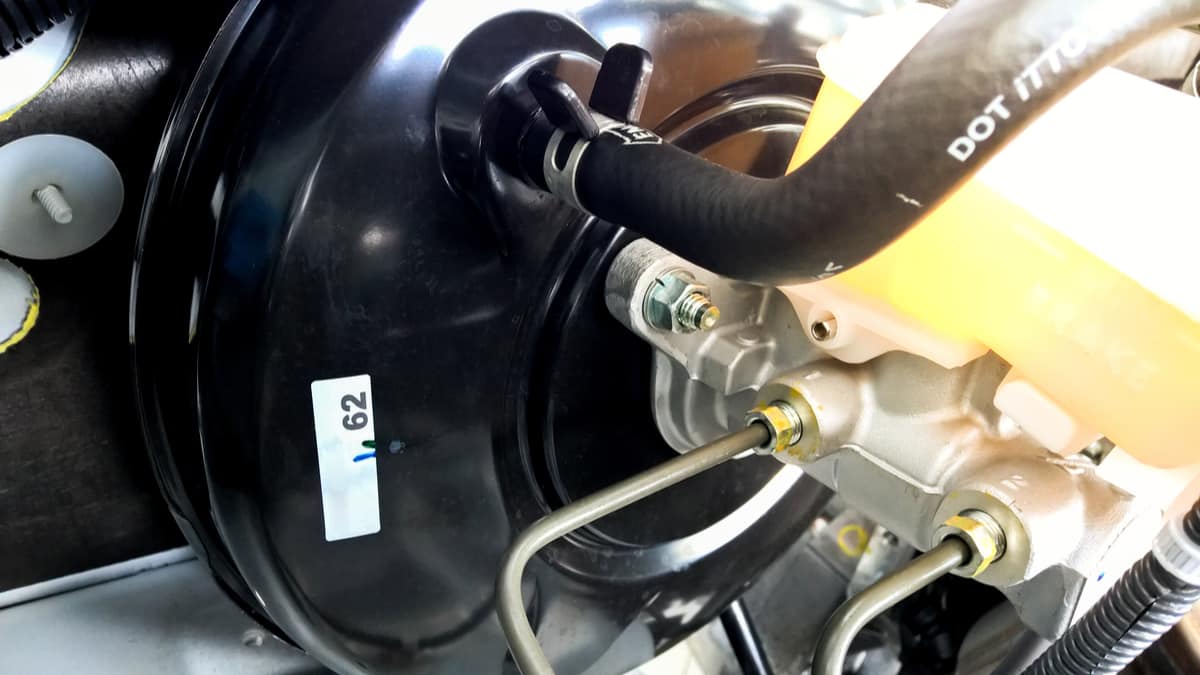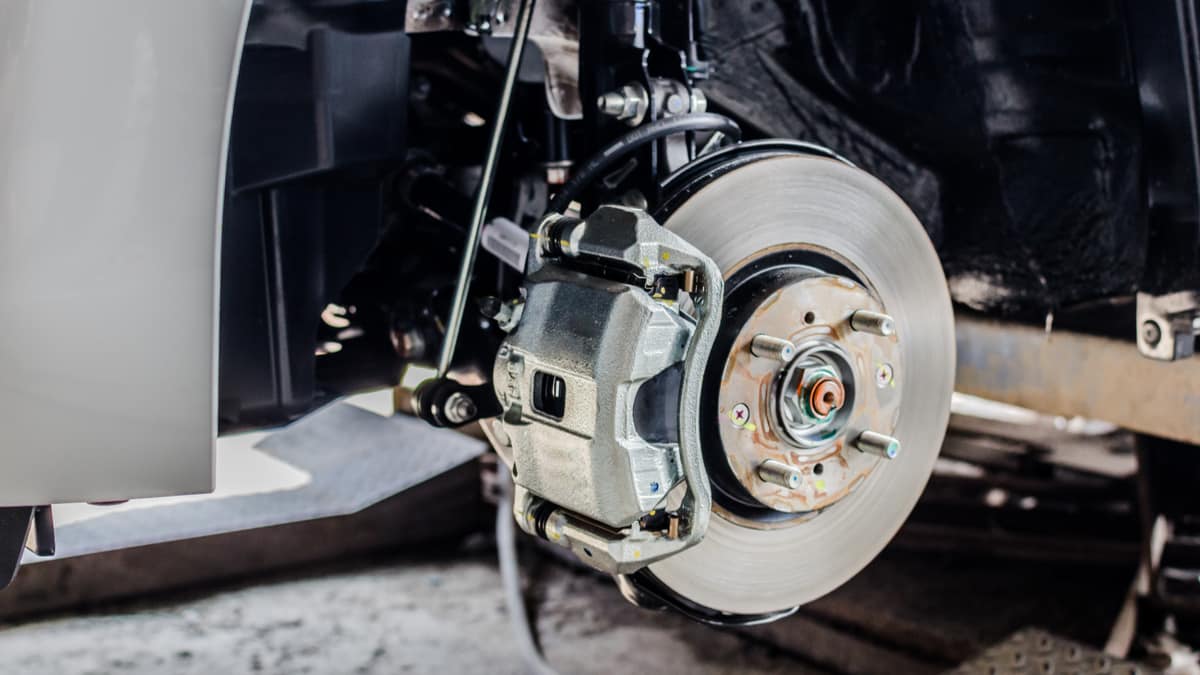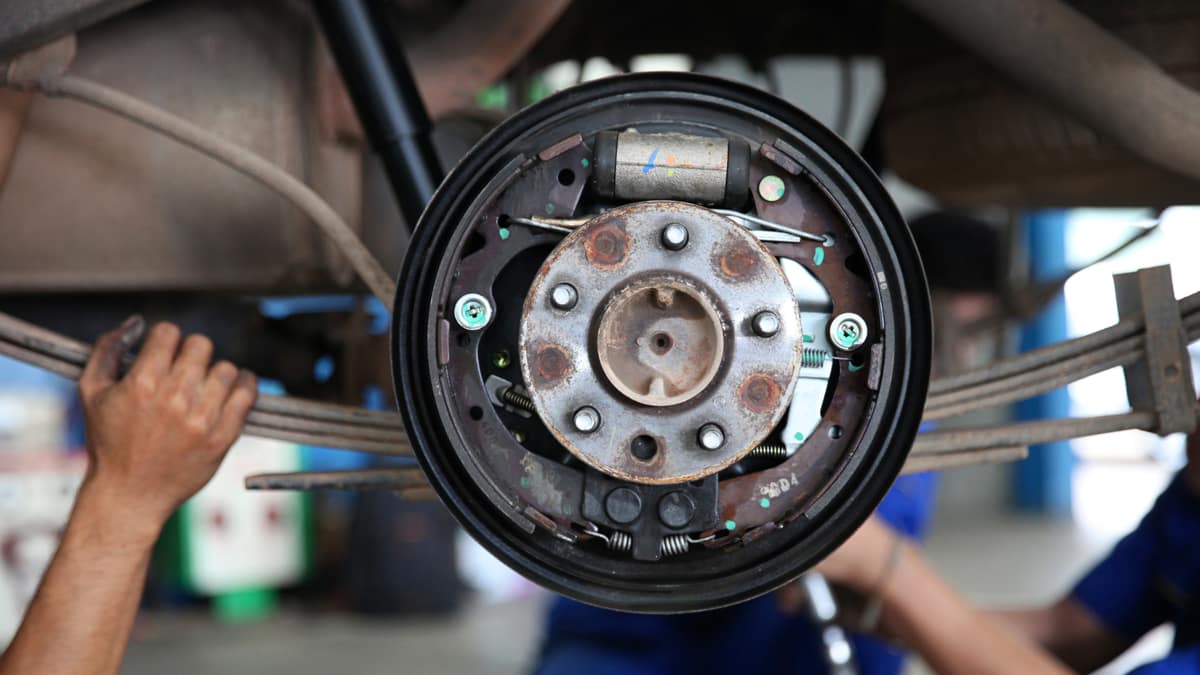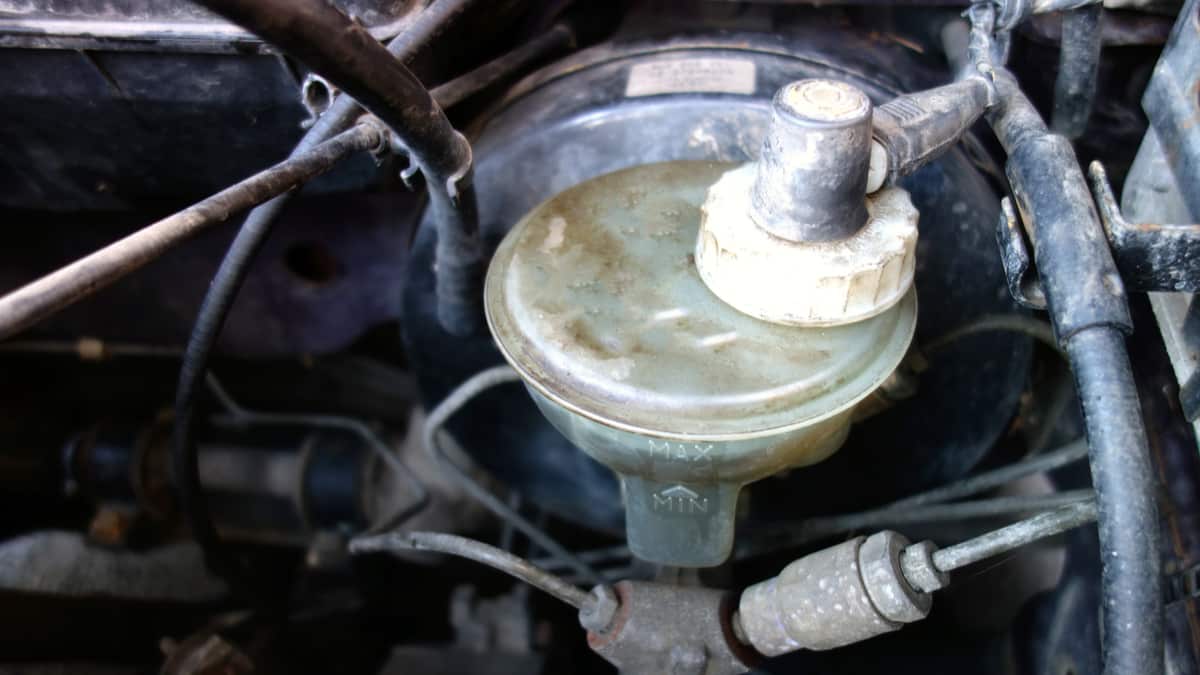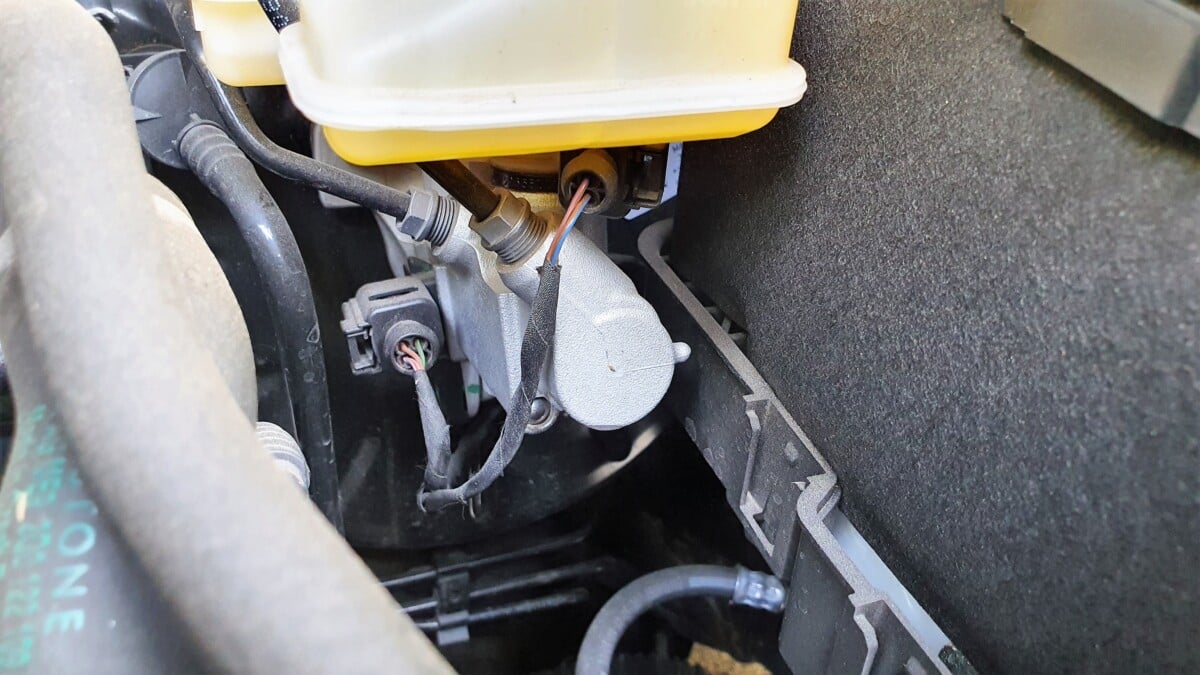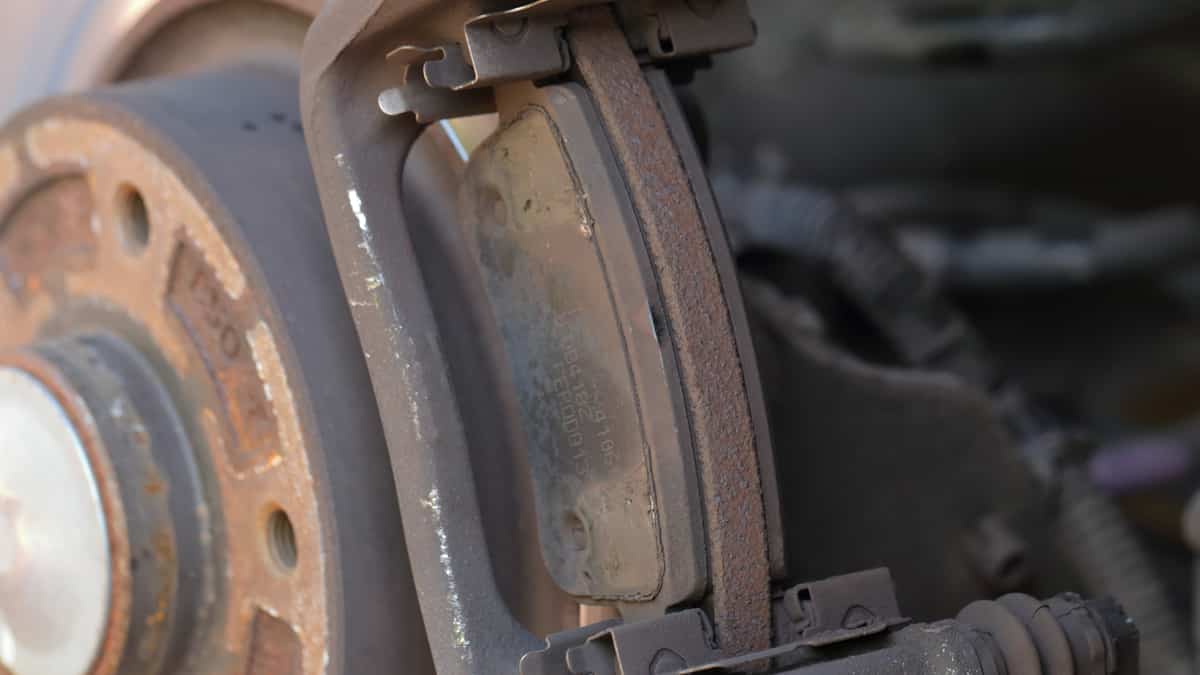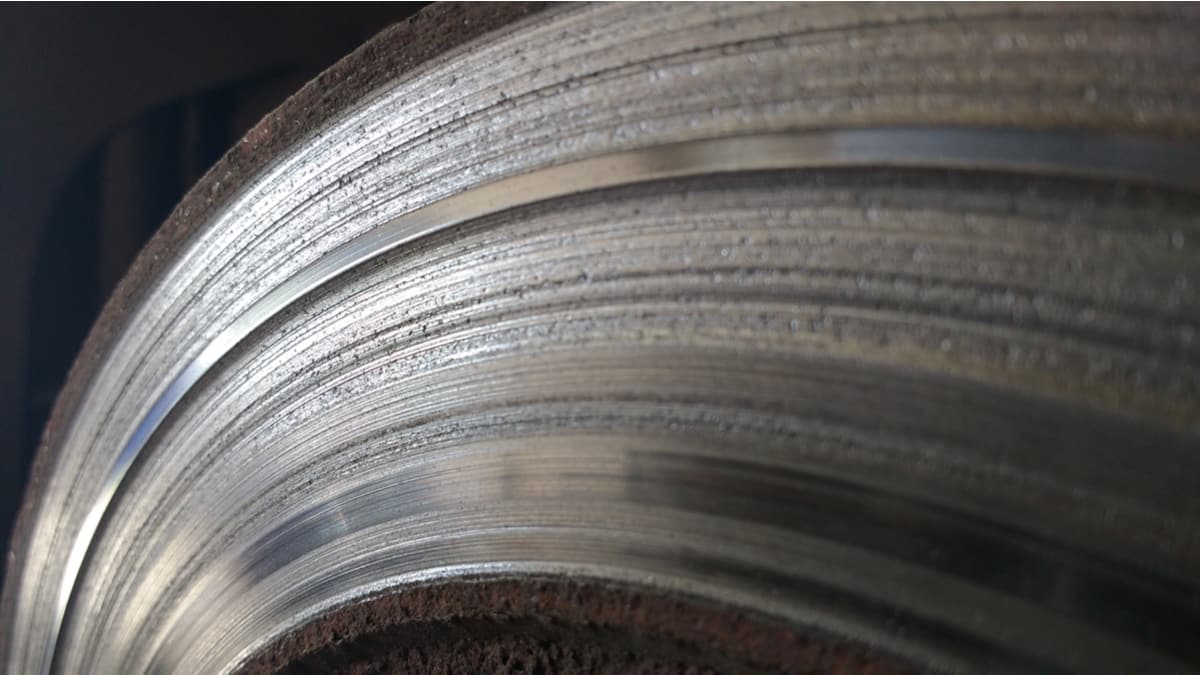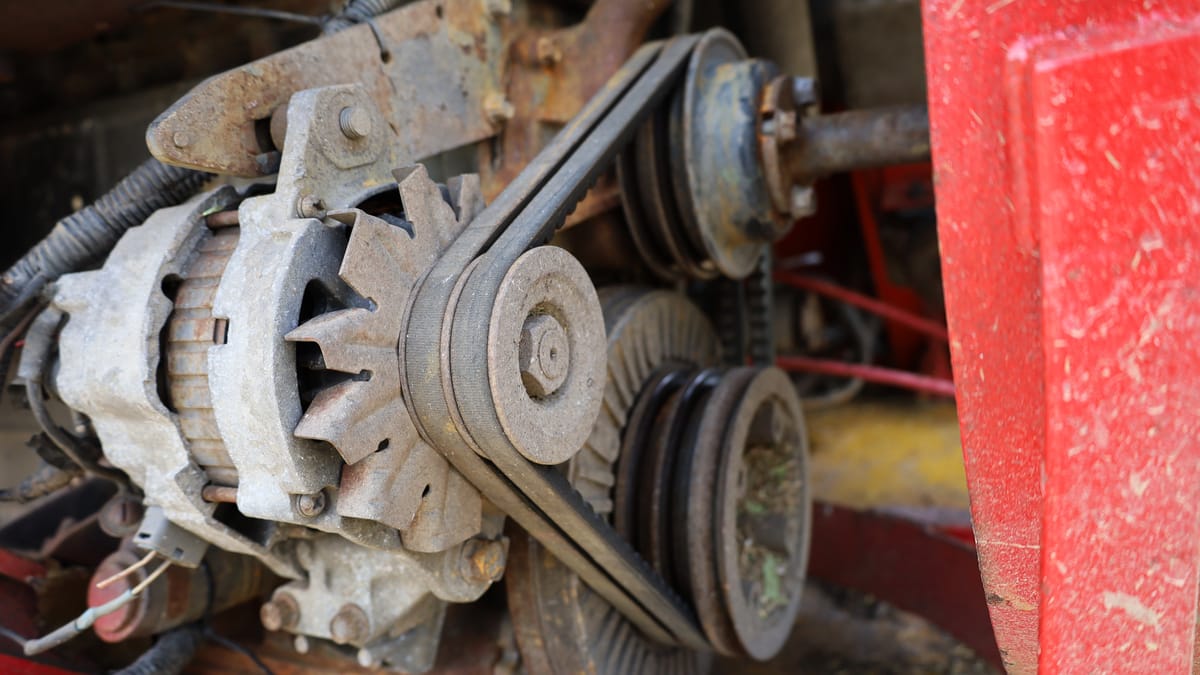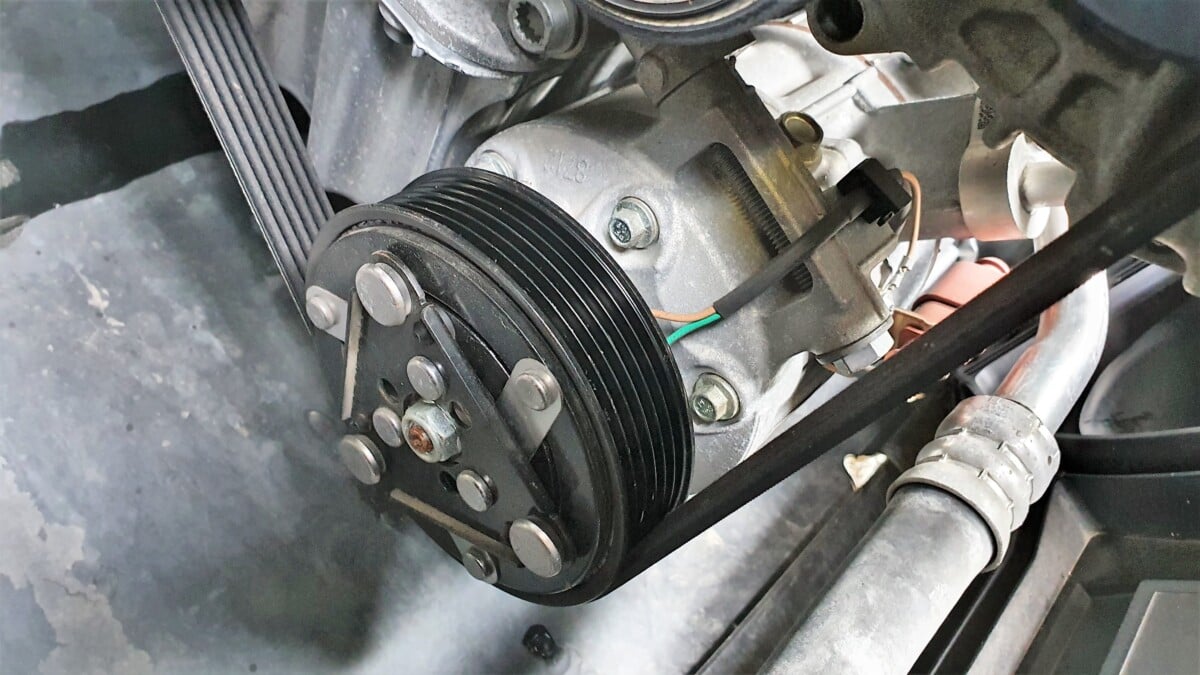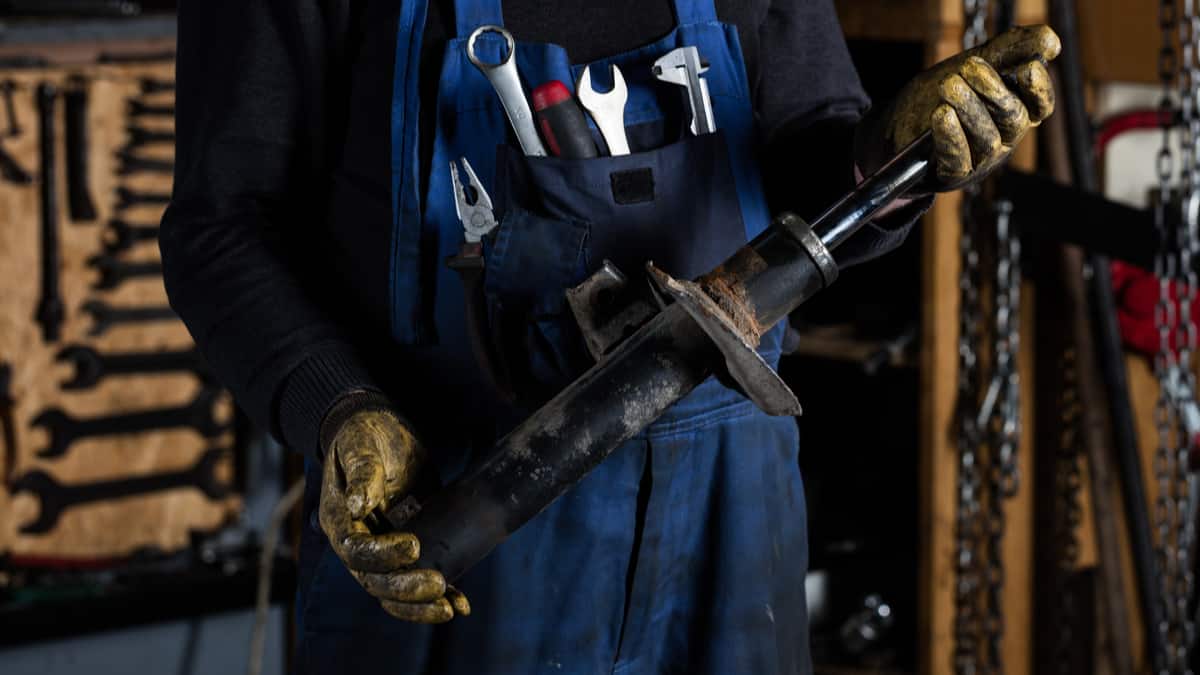The brake rotors are a vital part of your vehicle. The brake pads push against the brake rotor when you apply force to the brake pedal.
This creates a lot of heat, and therefore, your brake rotors need to be of the highest quality.
Without properly functioning brake rotors, an accident is inevitable. Therefore, the brakes must be taken care of effectively. Let’s begin with a quick look at the signs to look for.
Symptoms Of Bad Brake Rotors
The most common symptoms of bad or worn brake rotors are squealing noises when braking or worse brake performance than usual. If your car is shaking and the brake pedal is pulsating while braking, it is also a strong sign your brake rotors are bad.
The brake rotors in a car use the concept of friction to slow the car down. Friction can very easily wear out any component, and brakes are no exception.
As a result of their wear and tear, you will feel and hear some signs that indicate that the disc brakes are failing.
Here is a more detailed list of the signs of a bad or failing brake rotor to look for:
1. Squealing Noise from the Brakes
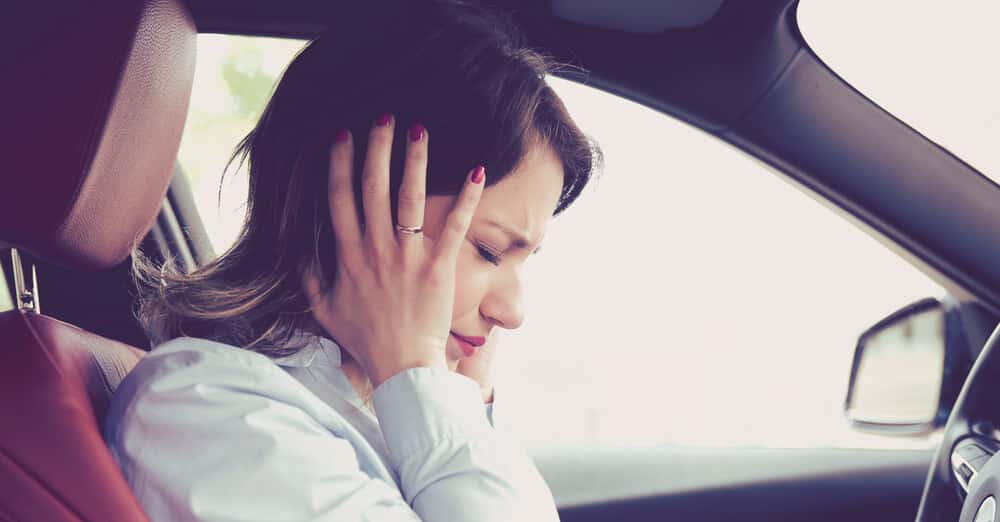
When the brake rotors get worn, it creates an uneven surface and edges on the inside and outside of the brake rotor surface. These edges and surfaces can create high pitch sounds when you drive normally, but this happens most often when you apply some force to your brakes.
If you hear high-pitching squealing every time you touch the brake pedal, it is definitely time to check your brake rotors for any damages or edges.
2. Vehicle Takes Longer to Stop

When the brake rotors get worn, they tend to create many uneven surfaces, which will cause the brake pads to get less “braking surface” on the brake rotor. This will reduce your brake efficiency dramatically.
See the picture above; as you can see, there is rust on 30% of the rotor surface’s inner part. This is because the brake pad is not using this surface to stop the car. This will probably also reduce your brake efficiency by 30%.
The rotor on the picture will probably get fixed after a few hard braking, but I think you get the idea.
3. Shaking steering wheel when braking
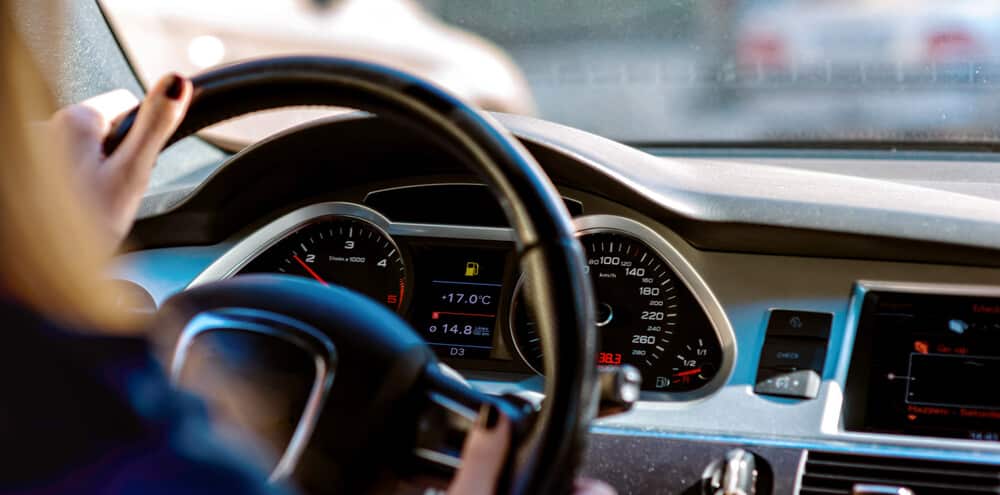
If your front brake rotors are going bad, you can often feel it in the steering wheel while braking. This can be because of rust on the brake rotors or if they got imbalanced due to overheating.
If you feel that your steering wheel is shaking when braking, it is definitely time to look up the front brake rotors.
4. Pulsating Brake Pedal
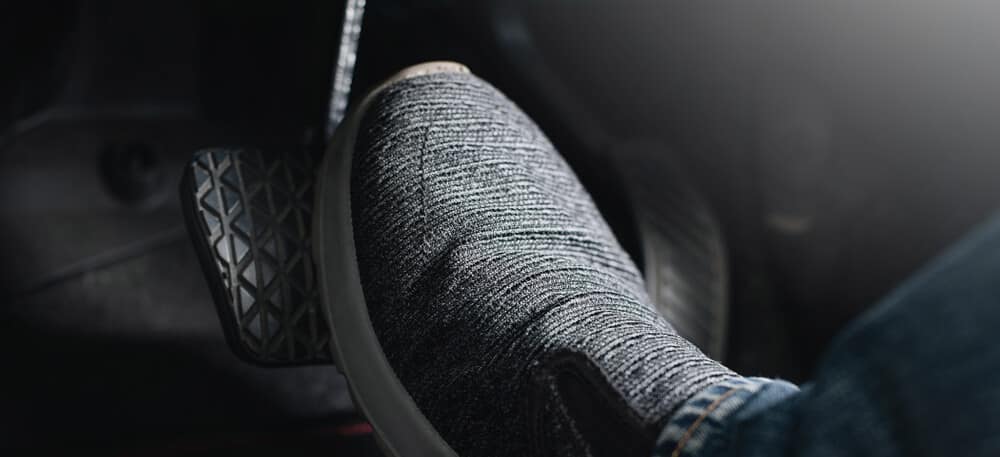
You can not only feel a worn brake rotor in the steering wheel. If you feel that the brake pedal is pulsating when you press the brake pedal, that might be caused by rust on the brake rotors or uneven surfaces.
When you feel a pulsating brake pedal while braking, it can be caused both by the front and rear brake rotors; however, if it is a problem with the front brake discs, you will probably feel it in the steering wheel also.
5. Loud bangs while braking
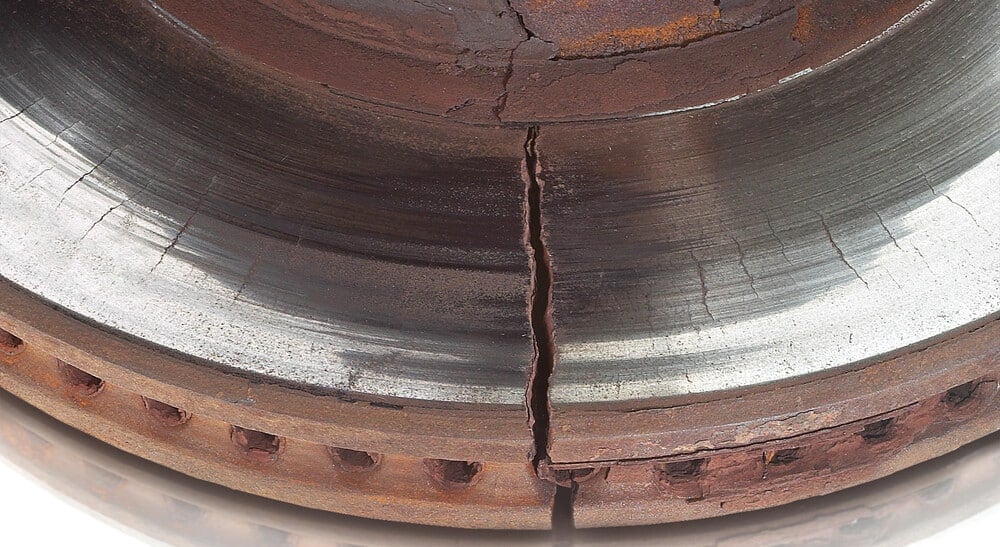
You can also experience loud bangs while braking if your brake rotors have gone really bad like in the picture above. If your brake rotor has these kinds of cracks, you should replace it immediately, because you might actually lose the whole brake function, putting you at risk of an accident.
6. Scratch Marks on The Rotor
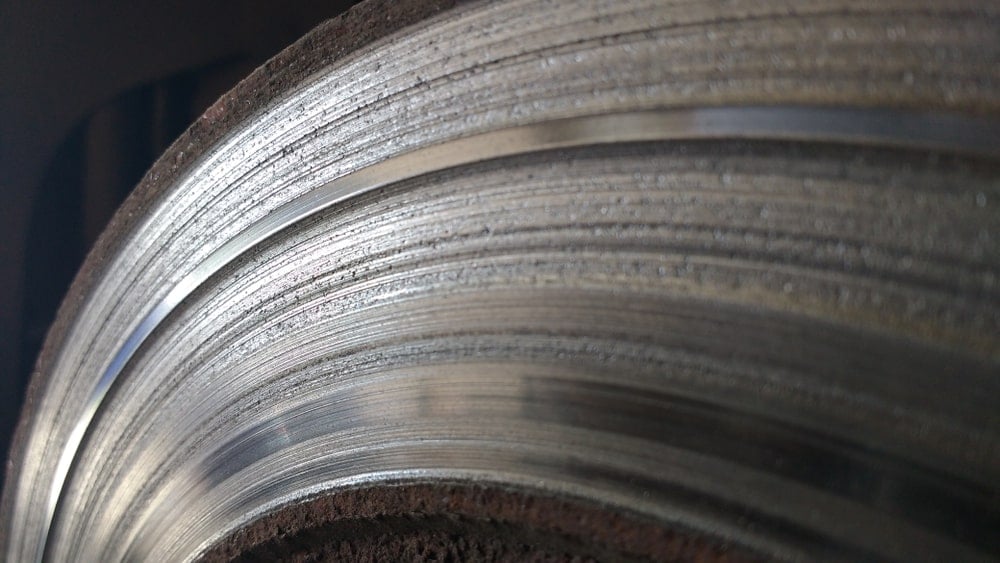
If you check behind the rim to see the brake rotor and notice that the brake rotor has many scratch marks, it is maybe time to replace the brake rotors.
All brake rotors get a small number of scratch marks pretty soon after replacement, but if you can see many deep scratch marks, it is probably time to replace the disc rotors.
Deep scratch marks are often caused by stones that get stuck between the brake pad and the rotor. If you heard a bad noise while braking sometime before noting these scratches, it might have been caused by a stone there.
7. Large edge on the outer part of the brake rotor
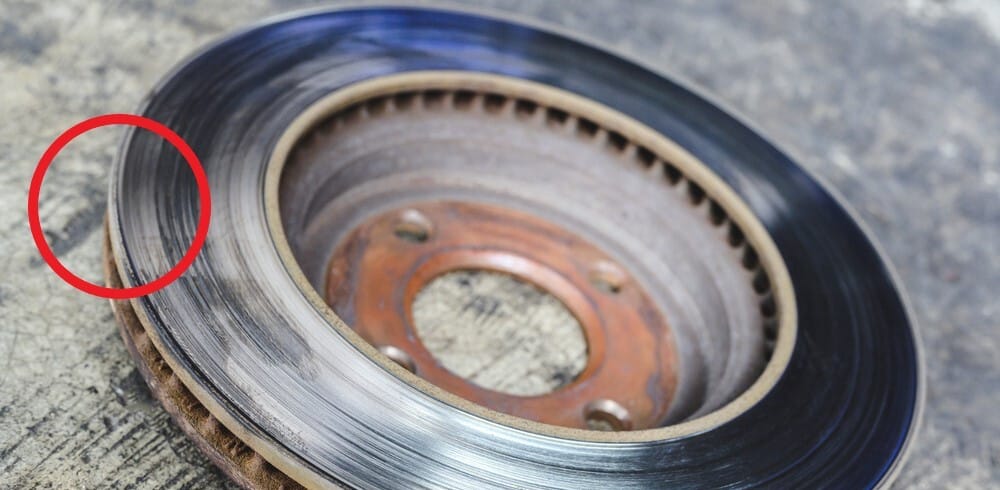
The best way to see if a brake rotor needs a replacement is by checking the small edge on the brake rotor’s outer or inner part.
You can see how much of the brake rotor is worn by checking this edge compared to when it was new. These edges can create loud noises, so it is recommended to remove them if the brake rotor is not too worn and needs a replacement.
Should I Resurface or Replace my Brake Rotors?

20 years ago, it was very common to resurface brake rotors instead of replacing them. This was because the brake rotors were quite expensive compared to today, and probably because labor was a little bit cheaper, as well.
However, some people want to resurface their brake rotors nowadays, too.
If you ask me, I never recommend anyone to resurface their brake rotors, because the money you save probably will not outweigh the problems you end up with.
Car manufacturers specify a minimum thickness of the brake rotors before they need replacement. Check if your brake rotor’s thickness is close to this minimum requirement.
If you have warped brake rotors and they have a lot of thickness left, then it can maybe be worth trying to resurface them. But remember that a bent disc/hub can cause this imbalance, and in the end, you will anyways have to replace them, which will cause a doubled cost. Learn more here: Resurface vs Replacement of Brake Rotors.
RELATED: When should you replace your brake rotors?
Brake Rotors Resurface Cost
The average brake rotor resurface cost is between $10 and $30 per rotor. Some workshops offer free resurfacing for people who order brake pad replacement, though the brake pads are not too bad.
If you have to pay for it, I recommend replacing the brake rotors instead.
To find more exact information on brake rotor replacement cost, check out my guide: Brake Rotors Replacement Cost
The cost to replace front brake rotors is often slightly higher than a replacement on the rear axle. This is because the cost of front brake rotors is generally much more expensive than the rear.
However, if you replace the rear brake rotors, you might have to replace the parking brake parts on some car models simultaneously. This can cause the price of rear brake rotors replacement to increase a little bit.
Categories: Brakes
